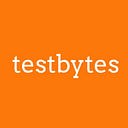So, want to know about the types of game testing methods? Following are some game testing techniques with respect to mobile software testing:
1) Combinatorial Testing:
This is a method of experimental design that is used for commercial software testing and to generate test cases. Applying combinatorial testing to game testing increases test execution efficiency, provide better quality, reduce cost and better phase containment.
Key Features
- Every possible combination of values of the parameters is covered using this test
- Identify distinct attributes that can be varied either in data or configuration
- Systematically generate combination for testing
- Include- Category-partition testing, Pair testing and Catalogue based testing
- Here the parameters are selected from game functions, elements, events, settings, play options, character attributes, customization choices, etc.2) Clean Room Testing:
- This is a software development process intended to develop gaming software with a certifiable level of reliability.
- Key Features
- Programming begins after formal specification
- No programmer testing method
- This approach combines mathematical reasoning, design refinement and statistical reasoning during test case generation and testing
- Main aim of this method is to produce minimal defect software
3) Functionality Testing:
This literally means the method to identify bugs or errors in a game that may affect the user-experience.
Key Features
- Determines whether the application is working according to the specifications.
- It is a complex testing method under the category of black-box testing technique.
- Takes more time to execute as testers look for game play issues, graphic issues, audio-visual issues, etc.
- Validates whether installation goes smoothly, the app works in minimized mode, the app allows social networking options, supports payment gateways, and many more.
4) Compatibility Testing:
This is used to find whether a game is functioning properly or not with respect to the hardware, graphics and software configuration that the device is built with. It is one of the essential mobile app testing services that checks if a game title is able to run on specific devices.
Key Features
- Validate whether the user interface of the app is as per the screen size of the device and ensure high quality
- Ensure whether the text is readable for all users
- This testing ensures that the product meets all necessary requirements set by the developer and the end user
- Ensures real compatibility between different testing environments
- Confirms workability and stability of the software.
5) Tree Testing:
This type of testing is almost same to usability testing used to organize the test cases. It also helps to select the proper set of tests for the given set of code changes.
Key Features
- Can be also conducted in advance of designing page layouts or navigation menus
- Allows inexpensive exploration, refinement of the menu categories, labels, etc.
- Tester doesn’t need to sketch wire frames or write content for testing. The only things needed are tree(menu), and the tasks(instructions).
- Improves the overall understanding of the complex features in the game
6) Regression Testing:
Regression testing is done to retest the unchanged parts of the software. Here test cases are re-checked to analyse the working of the previous functions of the app works fine and that new changes have not introduced any new errors or vulnerabilities.
Key Features
- Re-run the previously conducted tests
- Helps to compare the previous-results with current results and point out errors if any
- Critical aspect for quality controls
- Save time by detecting bugs at the starting stage itself
- Can be run as a functional test to verify the overall usability of the end product
7) Ad hoc Testing:
This is quite an unplanned testing method generally used to break down the system. Testers randomly test the app without test cases or any documents.
Key Features
- Do not follow any structured way of testing, it’s randomly done on any part of the app
- Mainly done to find defects using a random checking
- This is achieved using the testing method Error Guessing
- Since the defects are not mapped to test cases, it is quite difficult to reproduce the defects
8) Load Testing:
It is a type of performance testing to determine the performance of a system under real-time loads. Load testing shows the reaction of an app when multiple users use the app simultaneously.
Key Features
- Determine whether the current infrastructure is sufficient for the smooth running of the game
- Check sustainability of the app with peak user load
- Determine the number of users an app can support and its scalability rate to support more users
- Accommodates strategies for performance management.
9) Play Testing:
Play testing is the method of game testing by playing the game to analyse non-functional features like fun factors, difficulty levels, balance, etc. Here a selected group of users plays the unfinished versions of the game to check the work flow.
Key Features
- It is an integral part of game design and used commonly in PC games and character-playing games
- It is more about judging the game rather than the facts
- Main aim is to check whether a game works in a well-structured manner.
Conclusion
So what should the main focus of game testing be, should it be reality or vision? Nowadays, a game development team needs to spend more time on testing procedures than any other app development procedure as sometimes it becomes more complex due to the different components. Even with better planning, an implementation may not necessarily work. And like any other app, users rely on charm only for some time and eventually wants to have better results and better user experience.
